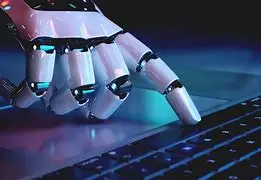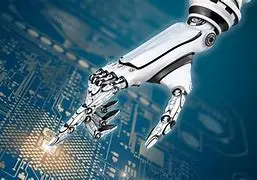
RPA is a technique that employs software robots to simulate human act ions on digital hardware and software.
Using internal application programming interfaces (APIs) or specialized scripting languages, a software developer creates a list of actions to automate a process and connect with the back end system in traditional workflow automation technologies. RPA systems, on the other hand, create the action list by observing the user carry out the task in the graphical user interface (GUI) of the program, and then carry out the automation by repeating those actions directly in the GUI. In products that might not otherwise have APIs for this purpose, this can lessen the barrier to the usage of automation.
RPA tools and graphical user interface testing tools are very comparable in terms of technology. These technologies also automate user interactions with the GUI, frequently by mimicking a user’s demonstration actions. In contrast to these systems, RPA tools enable the handling of data in and between many applications. For instance, receiving an email containing an invoice, extracting the data, and then entering it into a bookkeeping system are just a few examples of how this is possible.
Two Type of (RPA): Attended and unattended

Consider the two different kinds of automation—attended and unattended—when investigating RPA as a workflow automation solution before selecting which is best for your business.
Attended automation
You may concentrate on more high-value work throughout your organization by using attended automation. This is accomplished by automating laborious, time-consuming front-office tasks and by simulating mouse clicks made on a desktop or browser by recording and replaying these actions in real time.
Unattended Automating
Unattended automation, in comparison, doesn’t require a person to be in front of a computer, as the name suggests. Unattended bots take over, independently recording and replaying behaviors. They’re perfect for increasing the automation of high-volume processes throughout your organization because they support triggers and automated event scheduling.
The benefits of utilizing RPA

Repetitive, tiresome jobs aren’t actually the best use of a human’s cognitive powers, as anyone who has ever had to copy and paste the contents of one enormous spreadsheet to another will agree. Not only is it tedious for the individual doing the work, but the likelihood of mistakes in the finished product is substantially higher. Additionally, it will probably take a lot longer than if a robot were used to complete the task.
Herein lay two of the principal benefits of employing RPA: improved accuracy and productivity. Workers are given more time to do tasks of higher value, elevating the nature of the work they accomplish. Robots that have been programmed once always follow the rules. They never grow bored or fatigued, they never make mistakes, and they always produce solid results.
Bots also make it easy for businesses to scale up or down fast, making it possible to easily adapt seasonal workflows and/or surges across business units, locations, and desktop to cloud environments.
Click Here Further notice
Read More
- Danger on the deep ocean currents near Antarctica
- Discovery on a molecular mechanism linked to type 2 diabetes by researchers
- What Does Datafication Means in Science?


